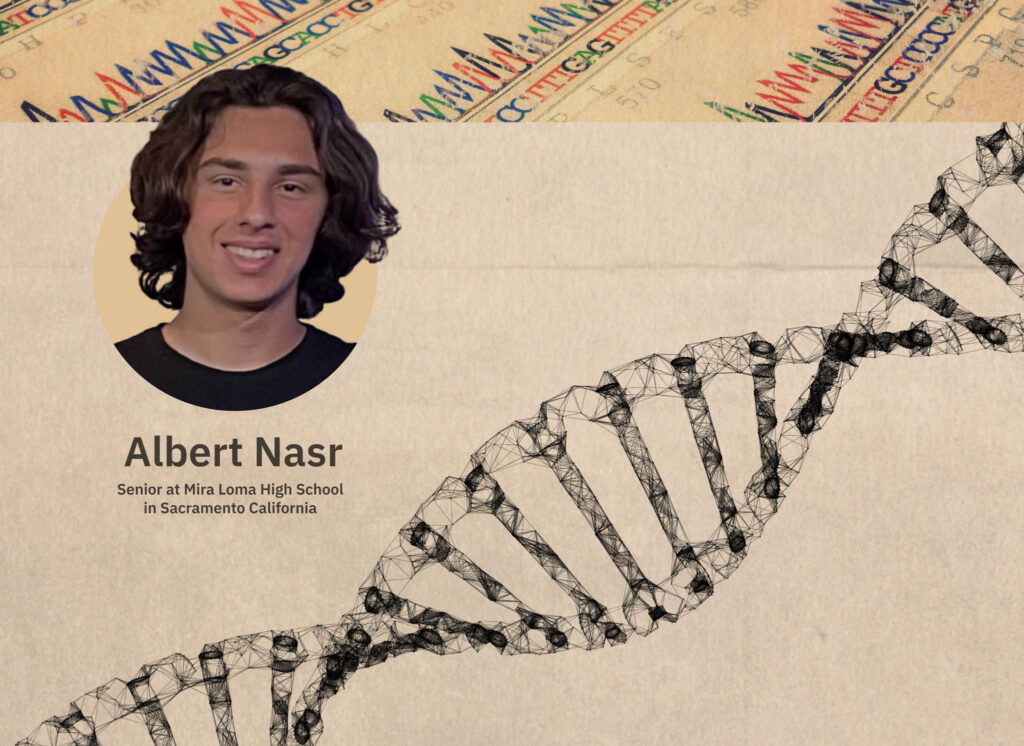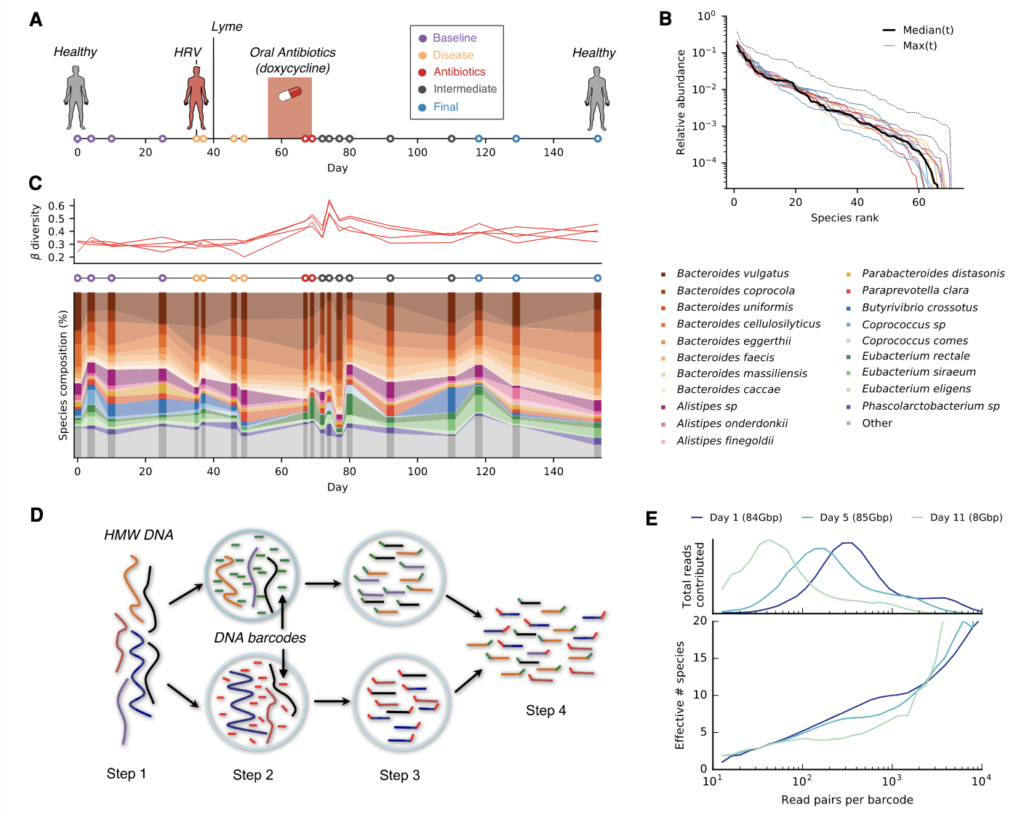Note: Any similarity in this text is due to the maintenance of the original paper’s style. All information credit goes to the authors of the study, as well as supplementary sources.
Research Authors:
Graham S. Erwin, Gamze Gürsoy, Rashid Al-Abri, Ashwini Suriyaprakash, Egor Dolzhenko, Kevin Zhu, Christian R. Hoerner, Shannon M. White, Lucia Ramirez, Ananya Vadlakonda, Alekhya Vadlakonda, Konor von Kraut, Julia Park, Charlotte M. Brannon, Daniel A. Sumano, Raushun A. Kirtikar, Alicia A. Erwin, Thomas J. Metzner, Ryan K. C. Yuen, Alice C. Fan, John T. Leppert, Michael A. Eberle, Mark Gerstein & Michael P. Snyder
Abstract:
Cancer is the second-leading cause of death in the United States, with over 600,000 deaths in 2022. It is a disease that often involves unstoppable cell division. While there have been many advances in cancer treatment over recent years, much of this treatment is toxic and damaging to the body. For example, chemotherapy harms different organs by killing both healthy and cancerous cells. This has caused researchers to wonder: Are there certain mutations in the DNA of cancer cells that can reveal that they are cancerous? If so, can they be selectively targeted so that healthy cells don’t die, but cancer cells can be eliminated? In a recent study from the Snyder Lab at Stanford University, researchers found that some sequence features, known as repeat expansions, are associated (statistically connected) with certain types of cancer. In this study, researchers explored a large variety of repeat expansions among 29 different types of cancers. In the genomes of numerous different cancer types, researchers found 160 recurrent repeat expansions (rREs). RREs are sequences of DNA repeats that are more than 100 base pairs in length and are expanded relative to a normal genome. The presence of so many rREs in cancer genomes hints at the possibility that these sequences may be related to the development of cancer.
This led the research team to wonder: Can suppressing these particular sequences using certain molecules help treat cancer in a precise way, without harming normal cells? This groundbreaking research offers answers to these questions, as well as the promise of a revolution in cancer treatment.
Background
Repeat expansions are abnormal DNA repeats and have been linked to many brain-related diseases such as Huntington’s disease, which causes the death of neurons. However, this study aimed to find links between repeat expansions and cancer.
In the past, certain types of DNA sequences have been linked to cancer. Genomic instability is when permanent DNA copying errors are made during cell division. If this occurs in repeating DNA sequences of 1 to 6 bases (known as microsatellites), it can lead to cancer. This is because microsatellites often function in cell-division-related areas of the DNA. If there are errors in these regions, cell division can’t be properly controlled, leading to cancer.
However, microsatellite repeats are DNA motifs that are repeated approximately 5 to 50 times. For example, if the repeat was CAG, a microsatellite would be the sequence CAG repeated five to fifty times.

Would analyzing repeat expansions (abnormally long DNA repeats), which are far larger than microsatellites, help find a link between repeat expansions and cancer? This was a fundamental question that researchers sought to answer in this study.
Repeat Expansions:
To understand repeat expansions, it is first essential to understand how they are related to DNA repeats and genes.
Segments of DNA sequences that have a certain function (code for a certain protein or have a structural function) are called genes. Some of these genes are made up of repeating base sequences (for example CAT-CAT-CAT-CAT). For these genes, a certain number of repeats is normal and a property of a healthy DNA sequence. However, if there are too many repeats in a row, it can lead to mutations that can cause a variety of different diseases.

Genetics and Targeting Molecules:
But how do the genetics of an individual relate to rREs? To understand this, it is essential to understand what genes are and what they signify.
Genes are DNA sequences that code for every character and function in the body. Alleles are different variations of a gene.

Each individual has two alleles that code for every trait. As the Punnett square below shows, there is variation in the alleles that each organism has; in this diagram, one has an AA genotype (genetic makeup), and the other has an Aa genotype. However, both have two alleles.

For certain genes, the healthy allele DNA sequences may be repeat sequences. However, rREs are where there are mutations that cause an allele to have more repeat expansions than either “normal allele,” making an abnormal and incorrect allele.
Methods:
The researchers grouped the cell samples they collected by type of cancer. Afterwards, they used a method called EHdn, which compared the size of repeat sequences in normal and cancer genomes to find any differences. With EHdn, researchers discovered that 72% of all repeat expansions could be observed by sequencing the full genome. They also used other methods to make sure that factors such as duplicate copies of a genome, did not affect the tracking of the number of repeat expansions in DNA sequences of the cancer genomes. This level of filtering allowed the researchers to focus on the long DNA repeat sequences only.
Results:
The researchers uncovered recurrent repeat expansions (rREs) in seven cancer types, including prostate cancer, kidney cancer, and lung cancer. Different cells, such as lung cells and kidney cells, originate from different layers of the embryo (developing fetus). Cells that originate from different layers have different processes. Because rREs were found in cancer cells that originated from different layers, it is clear that rREs are not associated with any routine cell processes. This hints at the idea that rREs may be associated with distinct cancers.
Of the 160 rREs found in the numerous cancer genomes, many were found in or near parts of the DNA sequence related to gene expression and cell division. This indicates that rREs may have a role in the overexpression of cell division-related genes, and can cause the uncontrolled cell division that is associated with cancer.
Additionally, the researchers analyzed the genomes of different types of cancers and found that one type of repeat expansion (the repetition of -GAAA) was found in over thirty percent of all cancers related to the kidney. However, when they used targeting molecules to prevent -GAAA-related proteins from working, the cell division rate decreased. Targeting molecules are molecules that target specific proteins made by certain DNA sequences. The success of these molecules demonstrates the potential of rREs in driving breakthroughs in our understanding of cell division and cancer.

These findings suggest that the way rREs develop is separate from microsatellite instability. This reveals the potential of more research and discoveries into how rREs develop and are related to cancer.
Patterns in rREs:
One of the recurrent repeat expansions found in numerous cancer genomes was a -GAA repeat sequence. This is a repeat sequence that causes a certain tumor suppressor gene, which helps control cell division, to be methylated, or shut off. When one of these genes is turned off, the resulting uncontrolled division can lead to cancer. This same repeat has been found in patients with Friedreich’s ataxia, a nervous-system disorder.
This finding is important as it reveals how gene malfunctioning can be related to numerous different diseases. It also shows how a certain rRE can cause a cancer-related gene change, showing a link between rREs and cancer.
Additionally, the researchers found that rREs were closer to or located in candidate cis-regulatory elements (cCREs), which are certain DNA sequences related to gene expression and cell division. This serves as additional evidence that these repeat expansions can affect cell division and gene expression. This can reveal a connection to certain cancers, as cancer involves uncontrolled cell division and gene expression.
Case Study: One rRE Found in Kidney Cancer:
A four-base repeating expansion was found to be present in over thirty percent of renal cell carcinoma (a type of kidney cancer) genomes in this study. The sequence was found to be present in a kidney- and liver-specific gene related to nutrient breakdown. When researchers analyzed the genome, they found that the rRE was close to a part of the DNA sequence that increases gene expression.
One of the researchers’ findings was that certain proteins expressed by this gene were produced more, and others were produced less, in the presence of the repeat expansion. This change in protein usage at this gene has been connected to cancer in the past. As a result, it is becoming more clear that rREs may cause changes at the genome level that can cause cancer. But how can this information help make effective treatments for cancer?
Potential Solutions:
In a nervous-system-related disease called Friedreich’s ataxia, using an engineered molecule to target a -GAA repeat sequence showed to be effective as standard treatment. Using engineered molecules activated these repeat sequences, which turned off certain genes that caused excessive protein production. This treatment reduced Friedreich’s ataxia’s impact on affected individuals.
The researchers investigated whether using molecules to shut off a -GAAA repeat sequence in certain cancers could serve as a treatment in a similar way. The researchers used an engineered molecule called Syn-TEF3 to target the -GAAA repeat sequences. They tested this, along with other molecules, on two types of kidney cancer cell lineages: Caki-1 (which had more repeats of the -GAAA; 164 repeats), and 786-O (which had fewer repeats of the -GAAA; 32 repeats)

As the left graphic shows, Syn-TEF3 had a major effect on decreasing cell density in the Caki-1 cell lineage. Because cell density is a sign of cell division, this evidence shows that Syn-TEF3 can decrease uncontrolled cell division in this cell lineage.
However, as shown in the right graphic, Syn-TEF3 did not have much of an effect on the cell density of the 786-O cell lineage. This difference may be based on the number of repeats, but more research is needed to be done in the future to understand this.
Overall, this evidence shows that targeting repeat expansions can help decrease the uncontrolled cell division that is characteristic of cancer, indicating the promise of a potential treatment.
Broadening View:
As the evidence shows, rREs are related to cell division and gene expression. This carries major implications for how rREs are related to cancer. In this groundbreaking study, it was found that many of the repeat characteristics in the noncoding DNA of certain genes are connected to the expression of the genes. This study also offers insight into treatments that can revolutionize cancer medicine, such as the use of synthetic molecules to activate or suppress DNA repeats. The researchers’ findings offer a new realm of medicine and science that can be explored, emphasizing the importance of continued research into rREs. This research serves as a stepping stone for both current and budding scientists to build on. It is without question that this research brings society one step closer to the “most” effective way to treat cancer.
Works Cited:
Erwin, G.S., Gürsoy, G., Al-Abri, R. et al. Recurrent repeat expansions in human cancer genomes. Nature 613, 96–102 (2023). https://doi.org/10.1038/s41586-022-05515-1
Additional Resources:
“Cancer Statistics, 2022.” ACS Journals, American Cancer Society, 12 January 2022, https://acsjournals.onlinelibrary.wiley.com/doi/full/10.3322/caac.21708. Accessed 8 June 2023.
“Definition of Genomic Instability – NCI Dictionary of Cancer Terms – NCI.” National Cancer Institute, https://www.cancer.gov/publications/dictionaries/cancer-terms/def/genomic-instability. Accessed 23 June 2023.
“FastStats – Leading Causes of Death.” Centers for Disease Control and Prevention, CDC, https://www.cdc.gov/nchs/fastats/leading-causes-of-death.htm. Accessed 8 June 2023.
Häggström, Mikael. “Microsatellite.” Wikipedia, https://en.wikipedia.org/wiki/Microsatellite. Accessed 8 June 2023.
“Microsatellite.” National Human Genome Research Institute, https://www.genome.gov/genetics-glossary/Microsatellite. Accessed 8 June 2023.
“Microsatellite DNA.” ScienceDirect, Methods in Enzymology, 2020, https://www.sciencedirect.com/topics/chemistry/microsatellite-dna. Accessed 8 June 2023.
Srivastava, Deepti, et al. “Chapter 12 – Modulation of Gene Expression by Microsatellites in Microbes.” https://www.sciencedirect.com/topics/biochemistry-genetics-and-molecular-biology/microsatellite-dna. ScienceDirect, 26 October 2018. Accessed 23 June 2023.
Badri Viswanathan is a junior at Hillsdale High School. He is extremely interested in the promise of genomics and other scientific breakthroughs, especially as pertaining to cardiology. He is the founder and president of a club at his school called Medicine for Us!, in which scientific literature is condensed and analyzed. This research is then shared to the community through monthly presentations.
In collaboration with the Stanford Healthcare Innovation Lab, he furthers his mission by analyzing promising new findings, such as multi-omics research. Badri hopes to be a cardiologist and conduct research one day.























































